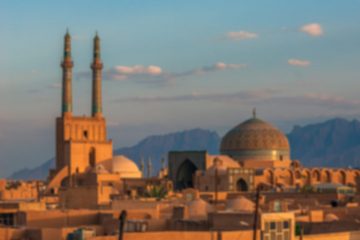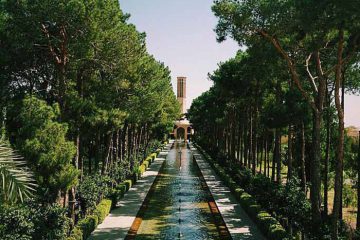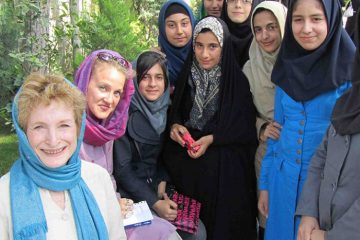Food in Iran :: Culture and Habits
Food In Iran : Every nation observes their own food culture, which has developed during millennia. The current Iranian cuisine is also the result of a long history of influences by cultures which were once part of the Persian borders, the now neighboring countries, or imported by dominating powers, say Russia, Britain, etc.
What is more, the highly variable climate of Iran too has diversified the components of Iranian food culture. Every region has developed food, most nutritionally adaptive to the rigors of subsistence in that region. Hence, cuisine of the Persian Gulf strip widely differs from that of the lush mountainous west and northwestern Iran and surely from the cuisine of desert regions.

Persian Stuffed Meatballs (Koufteh Tabrizi) Served in a Traditional Setting
#1 Predominant Features of Food in Iran
Anyone who has traveled to Iran testifies that rice and bread are the pillars of Iranian cuisines.
Moreover, Iranian food is unexpectedly, specially to the foreigners, served in large portions. In the household, rice and stews are served in large dishes in the middle and everyone has their portion taken from it.
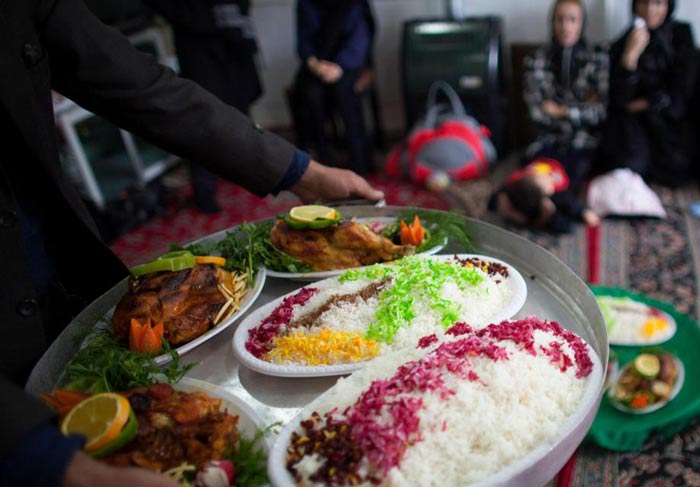
Iranian Food Served in Large Portions
Taste : Iranian cuisine is generally moderately tasting, while different spices are added in balance. However, Southern regions of Iran are known to have more spicy food, partly influenced by the culinary culture of Iran’s arab and Pakistani neighbors.
Preparation : Iranian food, the stews in particular, is mostly cooked in pots over a course of hours on the stove, or grilled on barbecues such as Kebabs.

Lamb Kebab , a popular Iranian Cuisine
Culture : Taarof (the courtesy of insistent offering of having more food, in this context) is an inseparable part of any Iranian dinner party. Iranians are known for their hospitality, and Taarof is part of Iranians’ way to welcome and honour their guests.
What is Taarof in Iranian Culture?
- Consumption of alcoholic beverages and pork are forbidden by Islam, and hence by the Iranian state rules.
#2 Mealtime Customs of Food in Iran
In Iran, there are 3 principal meals, each of which are hardly neglected : breakfast, lunch and dinner during the day.
The traditional custom of having the meals was primarily on a “Sofreh“, tablecloth one could call, which was and occasionally still is spread on the floor, and the main dish, side dishes, appetizers, drinks, etc. are all set on it. Every one would then sit around Sofreh and start having the meal.

Typical Iranian Meal Setting on a “Sofreh”
#1 Breakfast
The basic traditional Iranian breakfast consists of a variety of flat breads, butter, white cheese, cream, honey and a variety of fruit jams and spreads. Tea, often sweetened with sugar, is the primary breakfast drink.
Iranians, often, get up early to buy freshly baked bread for their breakfast of the day. This tradition was most practiced in the old days, although still some cannot afford to lose the joy of fresh bread for breakfast.
- Brunch is not as popular in Iran, as some other countries.
#2 Lunch and dinner
For Lunch and dinner, mostly stews and rice or bread is served. Multiple addition of a bit of stew on a spoonful of rice is how Iranians finish their meal. Water, traditional yoghurt drink are also on the Sofreh. Pickles, salads, raw leafy greens too are an integral part of Iranian lunch and dinner.
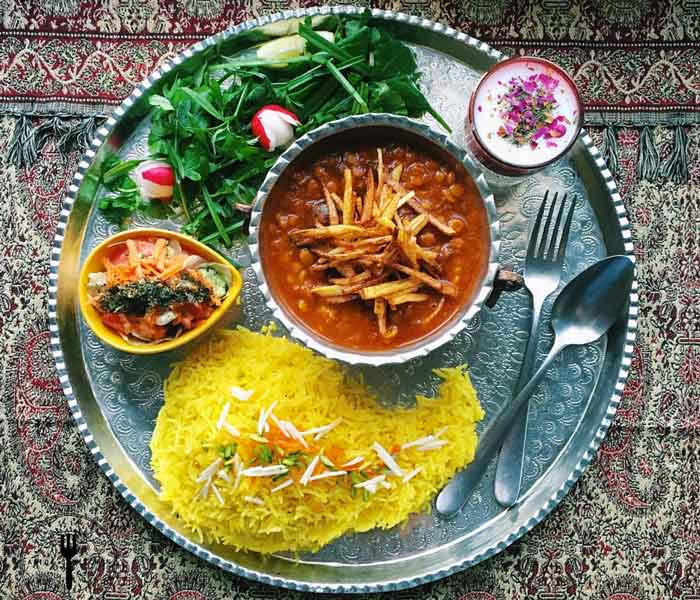
Gheimeh (Stew) Served with Saffron Rice and Yoghurt Drink on the Side
#3 Iranian Drinks and Beverages
Traditional drinks, hot or cold, are an integral part of Iranian culinary culture.
#1 Coffee or Tea ?
Up until the 17th century, coffee was the prevalent drink among Iranians, before the introduction of tea to Iran. Although, coffee is gaining more popularity than the olden days too.
Coffeehouses (Qahve-Khaneh) were developed throughout major cities since the 16th century. Still the word traditional coffeehouse are in use, only tea is served in them, along with the Iranian Water pipe. Tea and coffeehouses are very popular among Iranians, up to this day.
An Iranian day does not go by without at least! 3-4 servings of tea. Tea, mainly black, is served plentifully in gatherings, after lunch and dinner, and literally always!

Black Tea Served in Traditional Tea Set
Iranian tea is most often brewed with cardamom and cinnamon, among other fragrant herbs.
North of Iran, the strip along the Caspian sea (especially, Lahijan city in Gilan Province) are the major regions of cultivating premium Iranian tea.
#2 Herbal cocktails
Iranians have a knack for mixed herbal drinks, served hot or cold. Either, in form of syrups and extracts, or fragrant leaves and petals to be brewed, Iranian herbal cocktails are heavenly treats of Persian cuisine, such as rose water and Sour Orange extract.
Traditionally, Iranians believe in the healing powers of herbal drinks, not to mention the truly refreshing powers, especially in hot summer days.
- Alcoholic Drinks are banned in Iran.
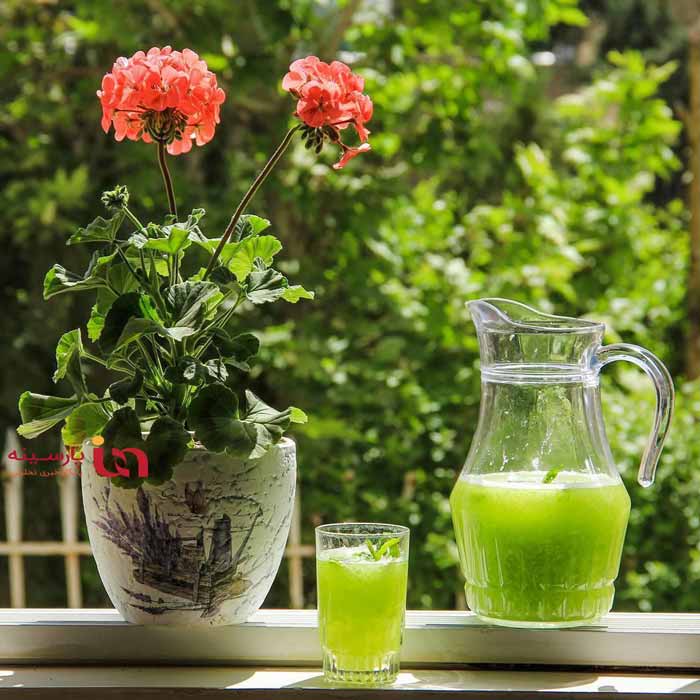
#4 Iranian Deserts and pastry
Iranians are known to be unapologetically sweet-toothed.
Every region offers their own specialties of bread (mostly flat) and pastry, while nuts, date (especially in the south) and starch cereals are the basic ingredients. Herbal syrups such as rose water and sour orange syrup too play an important role in the making of Persian deserts and pastry.
Deserts and pastry are usually served on specific occasions, as mentioned before, or in restaurants. They are not usually part of the daily life meals.
Baqlava of Tabriz, Gaz of Isfahan, Qottab of Yazd are all specialty pastries highly sweet and nut-filled. Traditional ice cream of Iranians too is very sweet and saffron flavored and rich in pistachio.
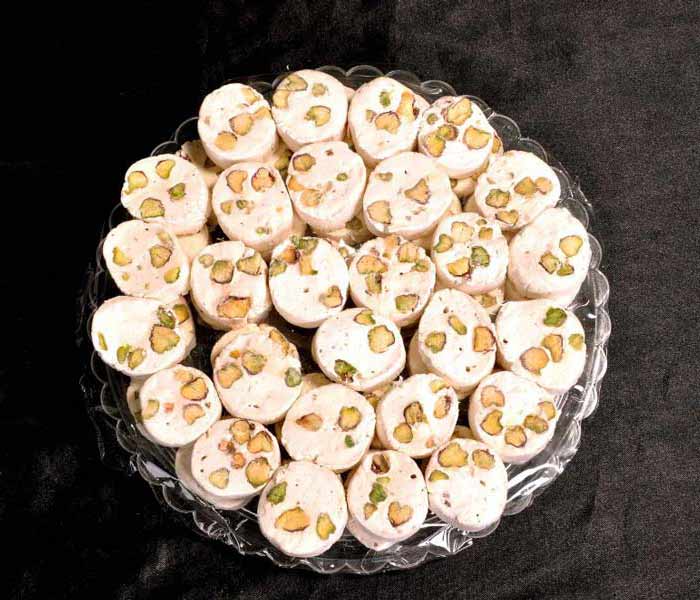
Gaz of Isfahan
#5 Spices/Seasonings in Food in Iran
Iranian cuisine is a graceful blend of different seasonings from dried green vegetable powders to Saffron and cinnamon, which individualizes Iranian food from the neighboring countries.
Onions and garlic are used only with discretion. Cinnamon, cardamom, saffron, paprika, nutmeg, turmeric and dill too are the predominant spices and seasoning in Persian cuisine.
Iran is the top exporter of the luxe spice of Saffron in the world. Saffron has a significant place in Persian culinary culture, from drinks to deserts and food.

Tahchin, a Famous Persian Specialty – Saffron is a main ingredient.
#6 Food for Religious/National Festivals
During festive occasions, such as Nowruz and Ramadan, or mourning occasions, such as Muharram, Iranians observe different food rituals.
On Nowruz Eve, for example, Iranians dine on Sabzi Polo Mahi (rice flavored with a dried leafy green and fried fish). What is Nowruz?
Or, in Muharram ( 9th month of Islamic calendar, a mourning festival in commemoration of the martyred Shi’ite Imam), votive offerings of different stews and rice are practiced. The meat in the stews are from the ritual of slaughtering beef or lamp. Thick noodle soup (Ash-e Reshteh) and other traditional meals such as Shol-e Zard (a rich yellow, saffron flavored) rice pudding with raw almond bits.

Shol-e Zard – Persian Saffron Rice Pudding, served on special occasions
During the holy month of Ramadan (a month of fasting from dawn till dusk), certain meals are served to break the fast such as Haleem (a nutrient thick mixture of wheat or barley and meat), Shir Berenj ( an Iranian rice pudding), etc.
Learn more about Festivals in Iran
Learn more about Most Popular Traditional Iranian Food
